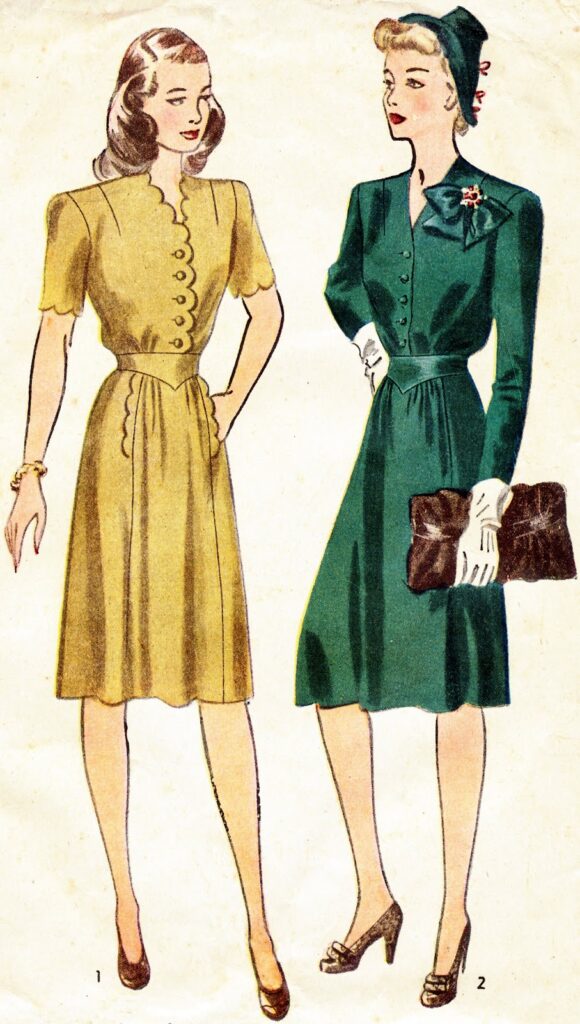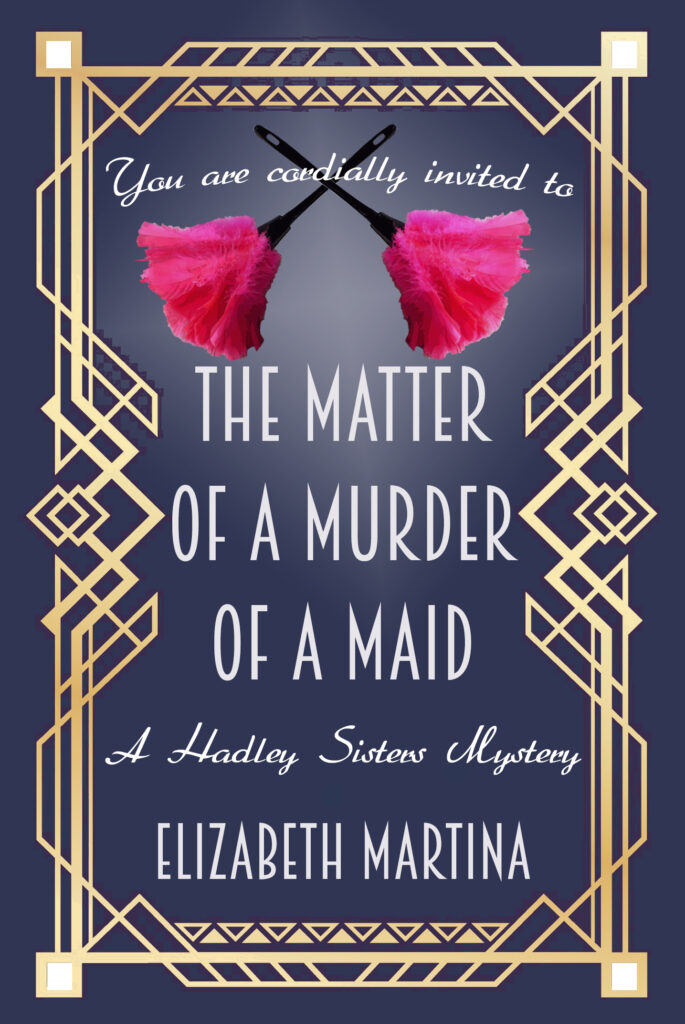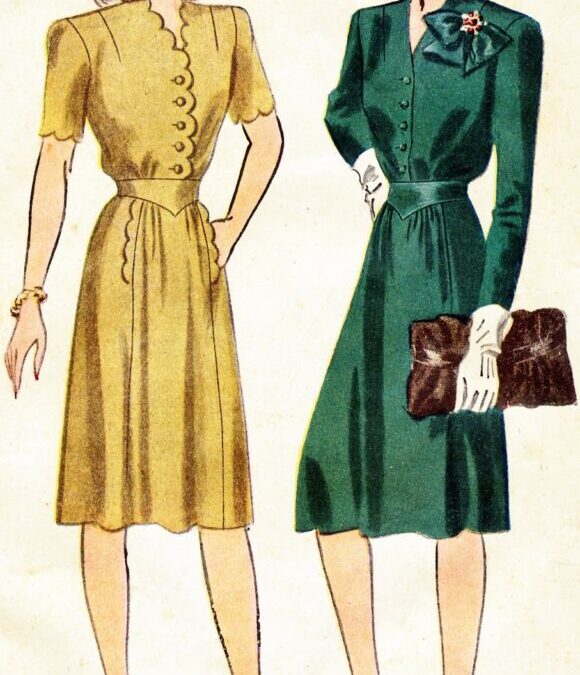
COSTUME DETAILS FOR WRITERS—1940s
Just like the 1910s, the fashions of this decade can be divided into two types, during the war and after the war. The all-out effort of the war dictated that the civilians had to be deprived of meat, dairy, silk, wool and many other items. This led to simplicity in style and dependence on just a few looks to carry women through the war.
The most obvious stylizations during the first half of the decade was the adaptation to little material. Skirts were almost all A-line, up to the knee. Waists were fit high and as small as possible. There was a slightly masculine look to tops. Every top seemed to have shoulder pads and a square cut. And red lipstick was on every woman.
Everyday dresses tended to be rayon or cotton. Their sleeves ended just above the elbow and could be puffy or straight. The shoulders were padded lightly. The skirts of the dresses were the simple A-line cut. Dresses were often solid, in patriotic colors, or with large prints. Necklines were quite modest, with laces and bows around the collars.
As many women were going to work, suits became popular. Made mostly of wool, they were harder to come by. The soldiers needed the material first. The advantage of suits over dresses, in addition to the professional look, was that two suits could become four looks, when mixed and matched. Suit skirts were neither straight nor gathered nor pleated. Jackets were longer than previously, reaching mid-hip. When buttoned, the jackets could be worn without a blouse, just a scarf for color. Boleros became more popular. These were shorter jackets, without buttons. A blouse or dress was worn with it.
Blouses, worn with suits or with a skirt, only, usually were buttoned down the front. Necklines either were V-shaped with lapels or a Peter Pan collar. A cardigan was sometimes worn with the blouse rather than a jacket.
Shoes were plain and chunky. Leather went to the soldiers. Women wore velvet, mesh, reptile skin and wood. Early in the decade the short thick heel was popular. Later the heel became thinner. This is when the wedge came out. It was pronounced to be safer than pumps. Maybe it was. Maybe it was just a popular option. Many of the shoes had peepholes at the toes, a stylistic choice. It had become too expensive to put designs in the shoes. As summers were seen as relaxing times, slip in shoes made a presentation. Loafers made their entrance among teens and working women at this time.
Coats for warmth were plain, square and to the knees, in the early 40s. They buttoned down the front and had narrow sleeves, which may or may not have had cuffs. Fur trim was still a popular option.
Swim suits were more popular than ever. Most were one piece, but the two piece was designed and worn. The tops were only 4” from the waist of the bottoms. Bottoms were skirts or like shorts, along the thigh. Beachwear, or “playsuits” were considered modest wear over a swim suit when away from the water. These were button-down; loose-fitting short outfits. These became the prototype for outfits of the 50s and 60s.
Head coverings were still de rigor for outings. Hairdos had grown long, again, and many wore their hair down. For safety at work, women wore their hair pulled back into a snood. It became a popular hair decoration. Hats, turbans and scarves were all worn in the most stylish of ways. Most hairdos were arranged so that they would look good with and without hats. Of all the looks most popular in the decade what stood out the most were the beret, the turban and the small hats with flat brims and small facial veils.
Accessories were still very important to the dress of the lady. Gloves were still worn for any semi-formal affair, like visiting or church. The gauntlet mid-arm length glove was the most common. These were plain, not lace or embroidered like previously. They were worn in neutral colors, matching one other accessory.
Purses were larger than in the previous decade. Women needed to carry more items, like office supplies and cosmetics. The purses were made with rushing and scallops. After the war, when women had more discretionary money, they bought purses in bold colors and geometric shapes.
The jewelry of the era was large, chunky and colorful. Much was made from the new plastics which came from research for the war. With the fewer clothes, these big pretty items looked cheerful.
The women clung to the concept of the ideal shape, wide shoulders, narrow waist, luscious hair. The trick of the shape was in the undergarments. Bras were large with full backs. They probably held the posture of the back better. Girdles, those awful creations, held hips from jiggling and waist tucked in. Slips were worn to keep a smooth look. Stockings were more comfortable than bare legs. They had seams up the back, which were required to be straight, and were sometimes difficult to keep so. Garters, the clip style by then, held the thigh-high stockings in place. Seams were common into the 50s. I remember!
Despite the boredom of the styles, the 1940s were a great decade to live through!

https://www.amazon.com/Matter-Murder-Hadley-Sisters-Mystery/dp/0983975876/ref=sr_1_1?dchild=1&keywords=The+Matter+of+a+Murder+of+a+Maid&qid=1598751382&sr=8-1


Recent Comments